If you’ve had Puttanesca sauce, you’ve heard the commonly thrown around interpretation that it’s a sauce “in the style of a prostitute”. No one ever explains exactly what that means, nor why this sauce that blends together a handful of intensely flavored ingredients would be the forte of a woman of the night. Various stabs have been made at this – it’s spicy like those sort of women; the aroma is so intoxicating it’s like a siren call (obviously, with the title of this post, I like that one); brothels whipped it up for their own staff because it’s quick and easy, and/or, for their customers for the same reason; married women did the same, though how that relates to prostitution, one has to wonder. Or, then there’s the origin story of a restaurant on the isle of Ischia that threw together a pasta with what they had for some hungry, late night regulars, una puttanata qualsiasi, sort of “anything we got”, in slang terms.
Originally the dish was called pasta alla marinara, but obviously not the marinara sauce we think of these days. Those days weren’t that long ago – though the sauce may well have existed as a local specialty long before the puttanesca moniker came into play, that name is only about seventy years old, dating from around the end of WWII. And while the region of Campania, and particularly Naples, has come to be associated with its origins, that neighboring isle of Ischia, as well as neighboring region of Lazio (Rome) also lay claim to its beginnings. Officially, or not, since these things are all muddled, there are differences between the versions served in the three cities, though I have the feeling that’s more just personal tastes of whomever is making it.
Let us start here, with the pasta. Over these last few posts I’ve casually mentioned the differences between spaghetti, spaghettoni, and bucatini. You might need to click on the photo to really get a sense of the difference in full size, but from the top, those are the three side by side. Now, the pasta of choice for puttanesca is most traditionally vermicelli. I’ve mentioned before, way back, that while those of us outside of Italy tend to think of vermicelli as a very thin pasta, almost like angel hair pasta, in Naples, the origin point, it’s actually a thicker pasta, about double the diameter of spaghetti. And while I can’t get true Italian vermicelli here, I can use spaghettoni, or even, as those from Rome are likely to use, spaghetti alla chitara, which I covered back in the post on cacio e pepe. You could use regular spaghetti if that’s all you have, but I’d assert that it’s too thin to really carry this sauce.
So we have our pasta settled. We also have tomato paste, capers, oregano (some say basil), anchovies, olives (“officially”, Naples and Ischia use black olives while Rome uses green – I use both), cherry tomatoes (some use chopped plum tomatoes, some use canned, some use passata, some use rehydrated, or oil packed, sun-dried tomatoes – I’ve even played around with a version that uses all of them, basically, though it becomes too tomato-y for my tastes), chilies (or chili flakes), garlic, and some chopped parsley, primarily for garnish. Cut the cherry tomatoes in half, slice the garlic, chilies, and olives, and chop the capers. At least, that’s my approach.
Get your pasta into the boiling salted water (my usual caveats about quantity and salt), and start the sauce – this goes quickly. In a few tablespoons of olive oil, over medium heat, start cooking the garlic, chilies, and anchovies. Kind of mash the anchovies until they simply fall apart and dissolve into the sauce. You’re not looking for pieces of them in the pasta, but more a briny note to the sauce.
As soon as the garlic starts to color, add a tablespoon or so of tomato paste, the tomatoes, capers, and olives. Crank up the heat and these will cook down in a matter of about five minutes.
Add the oregano leaves and a ladle of the starchy pasta water, and cook that a minute or so, stirring well to start the emulsifying process.
Again, as we’ve done in the past pasta posts, move the pasta to the skillet when it’s about two minutes short of being fully cooked. Add another ladle of the pasta water, enough to finish cooking the pasta in it. You can always add more if needed.
Toss and stir and mix it all up. About two minutes in, the sauce should be thickened up and clinging to the pasta.
And, serve, garnished with the chopped parsley. Now… cheese? I learned it without. Supposedly based on the whole “no cheese with fish”, but not everyone agrees with either that adage or that anchovies that have basically been melted into nothingness really count as fish. Besides, in the next post, I’m going to show you a fish and cheese pasta that’s also from Naples, and no one gets upset about the combination. Either way, the chef I first learned it from, whatever the reasons really were, always said that cheese just added one too many competing flavors to this dish. I’m inclined to agree, but more because between anchovies, olives, and capers, plus the pasta water, this dish is already solidly salty, and a grated cheese for me takes it over the edge into “too salty”. There are even those who say to leave out the anchovies, simply because then you can use cheese. Make it my way. Try it with a little cheese if you want on a small portion. Eat it the way you prefer.
Next time, as noted above, we’ll stay in Naples and check out of my favorites (they’re all my favorites, who can choose?), pasta alla caprese con tonno.
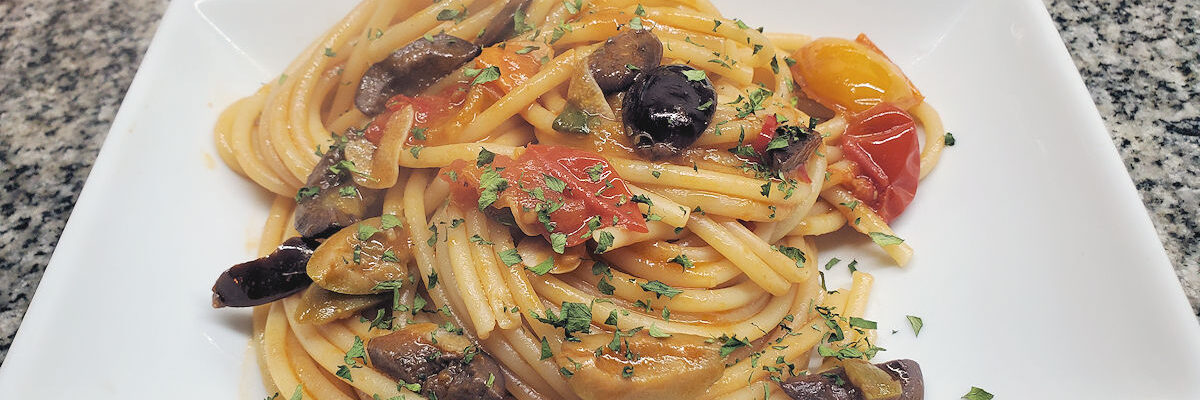
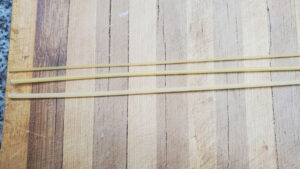
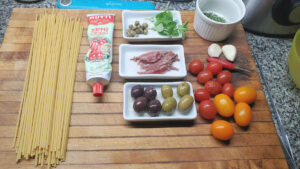
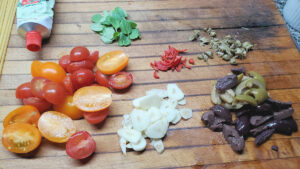
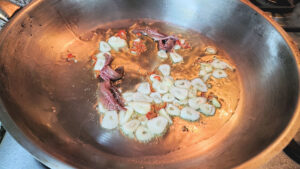
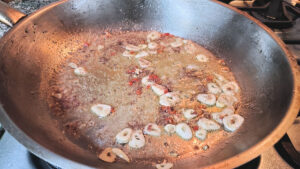
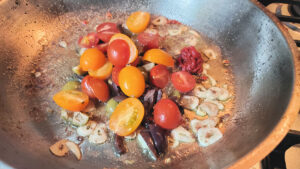
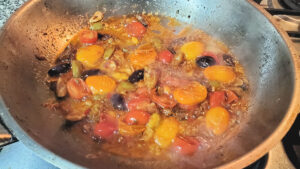
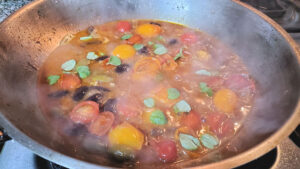
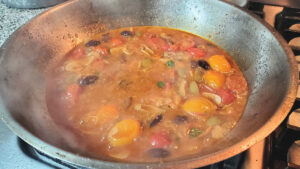
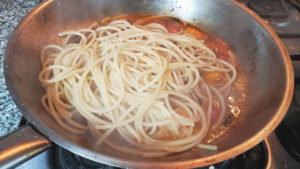
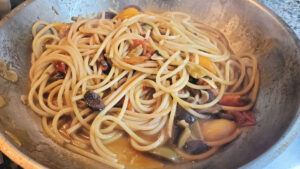
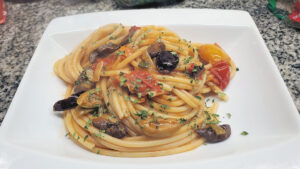
I want this dish, w/o cheese right now! And I’m still on morning coffee.
Nicely done, Dan.
It pairs well with coffee as long as you don’t use lots of cream and sugar. ?
[…] I was making, and eating this dish, it occurred to me that it’s very much like a spaghetti alla puttanesca, with the addition of fish. This particular version doesn’t include chili, which puttanesca […]